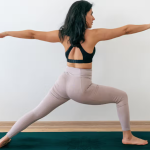One of the worst things about this current crisis and the lockdown, is the loneliness.
Loneliness is one of the number ONE factors in deciding life expectancy and can shorten a person’s life span by around 15 years. This extraordinary fact shows how social interactions are not only pleasurable but essential for life.
Part of our job as yoga teachers is to offer a regular place for people to come together with others who are like-minded; to feel part of a supportive community. And, during this crisis, this role is more important than ever.
Why yoga teachers are well-placed to build community
As we become established yoga teachers, we notice the effect that it has on our yoga students. Hopefully, they will start to cultivate their own home yoga practice. You can see the instructions you give them going deeper, making sense in their bodies and not just their minds.
It also starts to become a more and more important part of their life, as they realise the benefits it brings. They see their yoga classes as a sanctuary, a place where they can be themselves and spend time with like-minded people.
This sense of community is a valuable and beautiful thing to cultivate, and as yoga teachers we are perfectly placed to add a real sense of belonging to our students’ lives.
What is a yoga community?
A community is a group of people that have the same beliefs and needs, or a unified body of individuals. This last definition is a great one, as yoga literally means to join, to unify – and of course, the body is how we do that.
As a yoga teacher there’s a lot we can do to encourage a sense of community and it has many benefits. And while it has many benefits for your students, it is also beneficial to you, because if your students feel like they belong to a community, they’re much more likely to be loyal to you and your class. Building brand loyalty is one of those marketing holy grails!
Practical ways to build community
Let’s start with the basics, the first thing is to know all your students’ names! This can be a real stumbling block for some, but there are memory games you can use to help if you struggle to remember names. And at the moment if you’re teaching on Zoom, you should be able to see everyone’s names on the screen. It might be worth reminding them to make sure they log in with their names, and not ‘iPad’.
When we get back to in-person teaching, there are lots of ways to encourage community. You can encourage students to come to class a little earlier and start a conversation from the front of the class – making sure you include everybody, and drawing everyone in.
This can be applied to online live-stream teaching too. Make sure you’re online in the meeting space in plenty of time and encourage students to be in gallery mode with the microphones on if they want to chat (not if they’re just banging around and ejecting the cat).
Do things together – Karma yoga
This applies more once lockdown is finished and we can get back to in-person teaching. But even then, we don’t know how yoga teaching is going to be. It may well be that we won’t be able to teach in a small space for quite a while. But there are other ways to get together to build your yoga community.
Karma yoga is the yoga of selfless actions. Encourage a sense of giving and shared community within your student body. If you run a yoga studio get them involved in the upkeep of the building, in return for a nice lunch or free lessons.
While we’re still social distancing you could suggest a yoga lesson outside, where it’s safer. You could even suggest a mindfulness ‘yoga walk’ once we’re allowed to meet in larger groups.
Be generous!
There are a lot of yoga teachers out there, and if you want to keep your yoga students loyal to you it’s worth going above and beyond. Plus the more you give, the more you get – that’s just a good old fact of life.
So, what about giving out bespoke home practice sequences to your students? Write a regular blog to help them establish a home practice, and ask them to let you know how their home practice is going.
If you’re confident enough to teach workshops, ask them what workshops they’d like to do, so that they feel included in your decision-making process and to highlight the fact that you’re there to guide them on their yoga journey.
Keep in touch with them over email and if they’re usually a regular student, check in if they miss classes to make sure they’re ok.
Create a supportive community for yourself too
As a yoga teacher you also need a support structure! So make the effort to keep in touch with your own teachers, as well as spend time with other yoga teachers. This is such a great way to discuss issues that you might be struggling with.
Practice with other teachers and make the effort to go to other teacher’s classes, you’ll be surprised at what you might learn. At the moment this could be done on Zoom, or just by practicing at the same time and then having a chat afterwards to share how it went. Did we mention we’re running free Saturday and Sunday sessions at the moment?
Use your social media accounts wisely, follow other yoga teachers who inspire you (but don’t make you feel rubbish about yourself), and reach out online to create a sense of belonging to the wider yoga community.
However…
Remember that there’s a fine line between being someone’s teacher and someone’s friend. Yes, it’s fine to have friends in your classes. But when you’re teaching, you’re the teacher and they’re the student. They come to class to be taught, not to be your friend.
It’s also tempting to give too much as a teacher. You are not their therapist or carer, the primary focus is to be their guide on their path to yoga.













